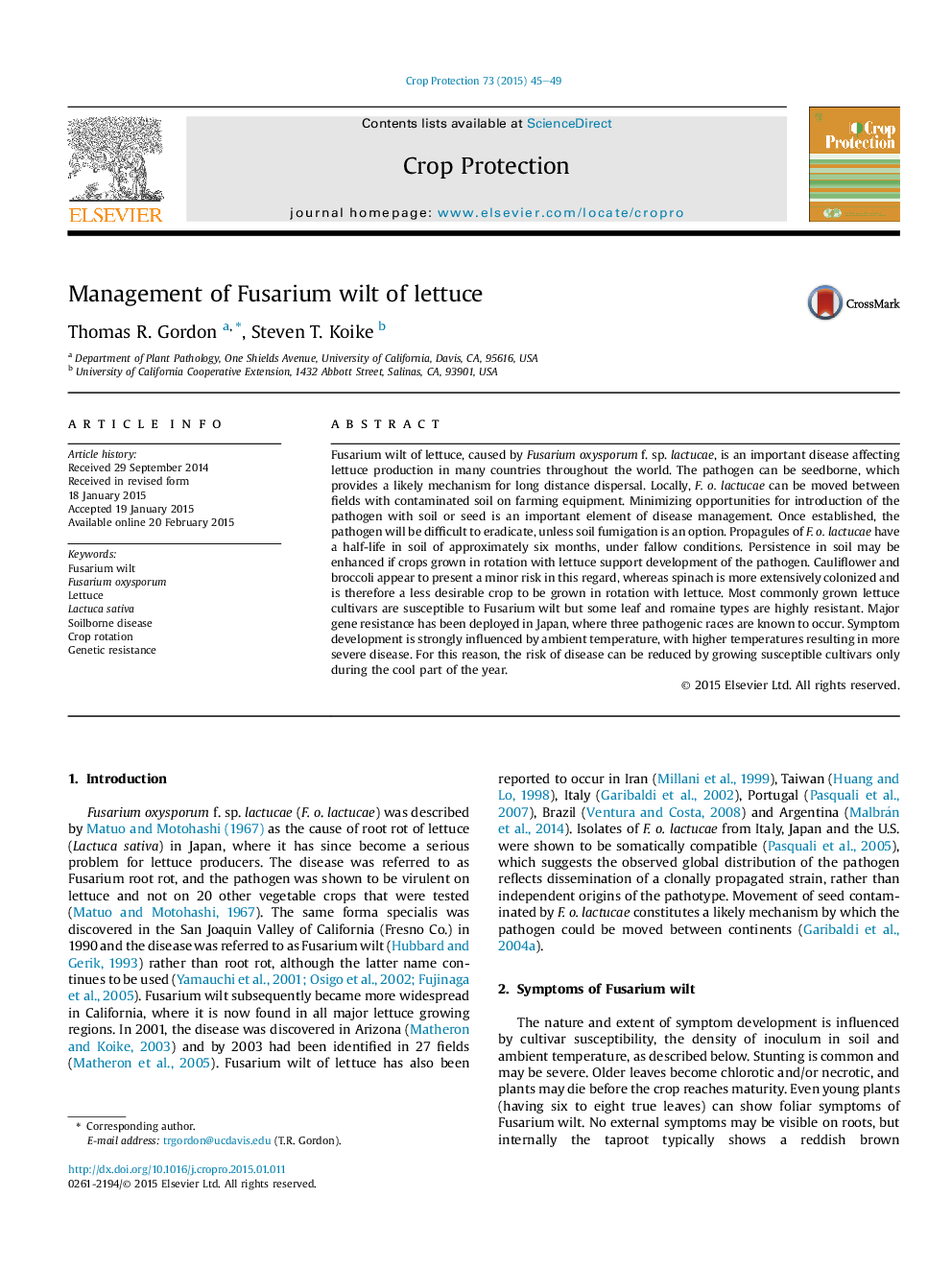| Article ID | Journal | Published Year | Pages | File Type |
|---|---|---|---|---|
| 4505770 | Crop Protection | 2015 | 5 Pages |
•Iceberg lettuce varieties are all susceptible to Fusarium wilt to some degree.•Some romaine and leaf types are highly resistant to Fusarium wilt.•Higher temperatures favor disease development.•The Fusarium wilt pathogen has a half-life in fallow soil of six months.•The pathogen colonizes crops that may be grown in rotation with lettuce.
Fusarium wilt of lettuce, caused by Fusarium oxysporum f. sp. lactucae, is an important disease affecting lettuce production in many countries throughout the world. The pathogen can be seedborne, which provides a likely mechanism for long distance dispersal. Locally, F. o. lactucae can be moved between fields with contaminated soil on farming equipment. Minimizing opportunities for introduction of the pathogen with soil or seed is an important element of disease management. Once established, the pathogen will be difficult to eradicate, unless soil fumigation is an option. Propagules of F. o. lactucae have a half-life in soil of approximately six months, under fallow conditions. Persistence in soil may be enhanced if crops grown in rotation with lettuce support development of the pathogen. Cauliflower and broccoli appear to present a minor risk in this regard, whereas spinach is more extensively colonized and is therefore a less desirable crop to be grown in rotation with lettuce. Most commonly grown lettuce cultivars are susceptible to Fusarium wilt but some leaf and romaine types are highly resistant. Major gene resistance has been deployed in Japan, where three pathogenic races are known to occur. Symptom development is strongly influenced by ambient temperature, with higher temperatures resulting in more severe disease. For this reason, the risk of disease can be reduced by growing susceptible cultivars only during the cool part of the year.
